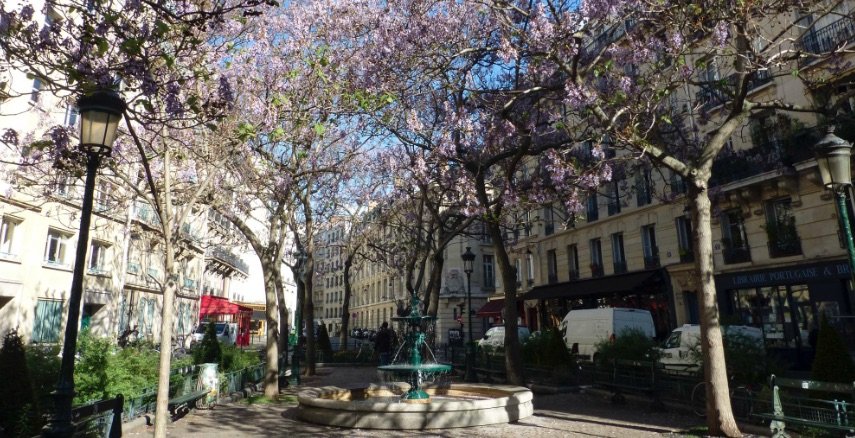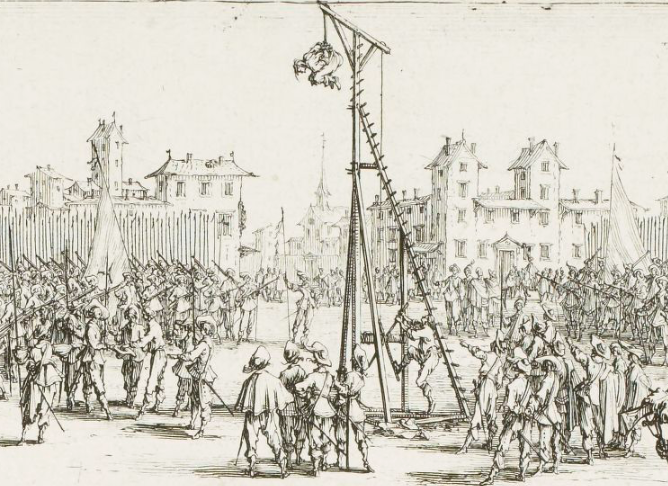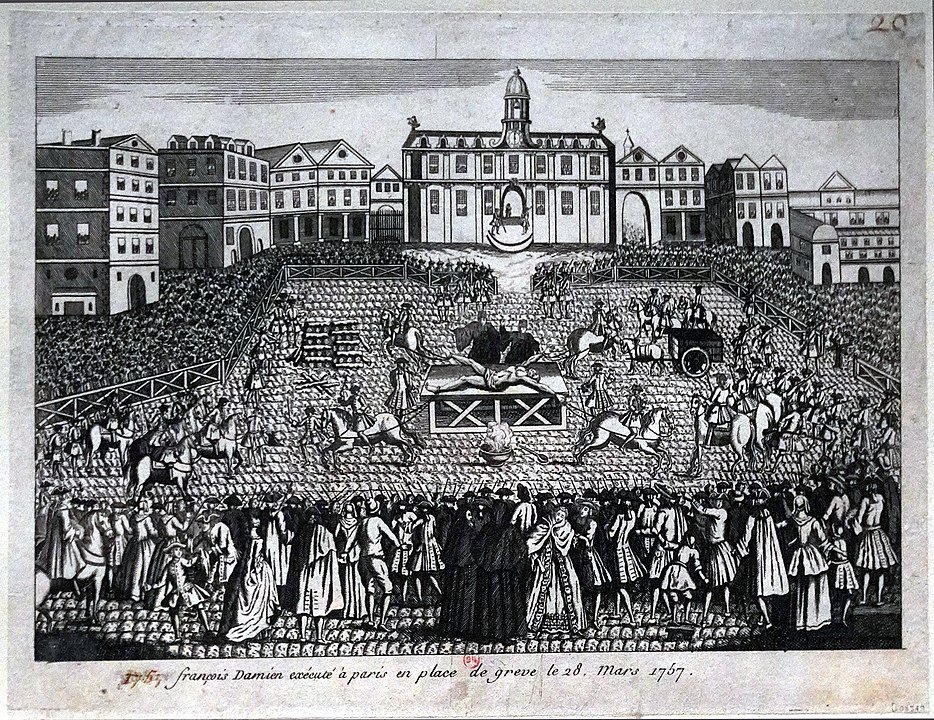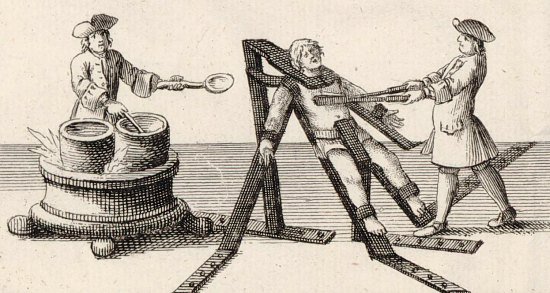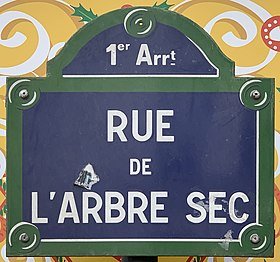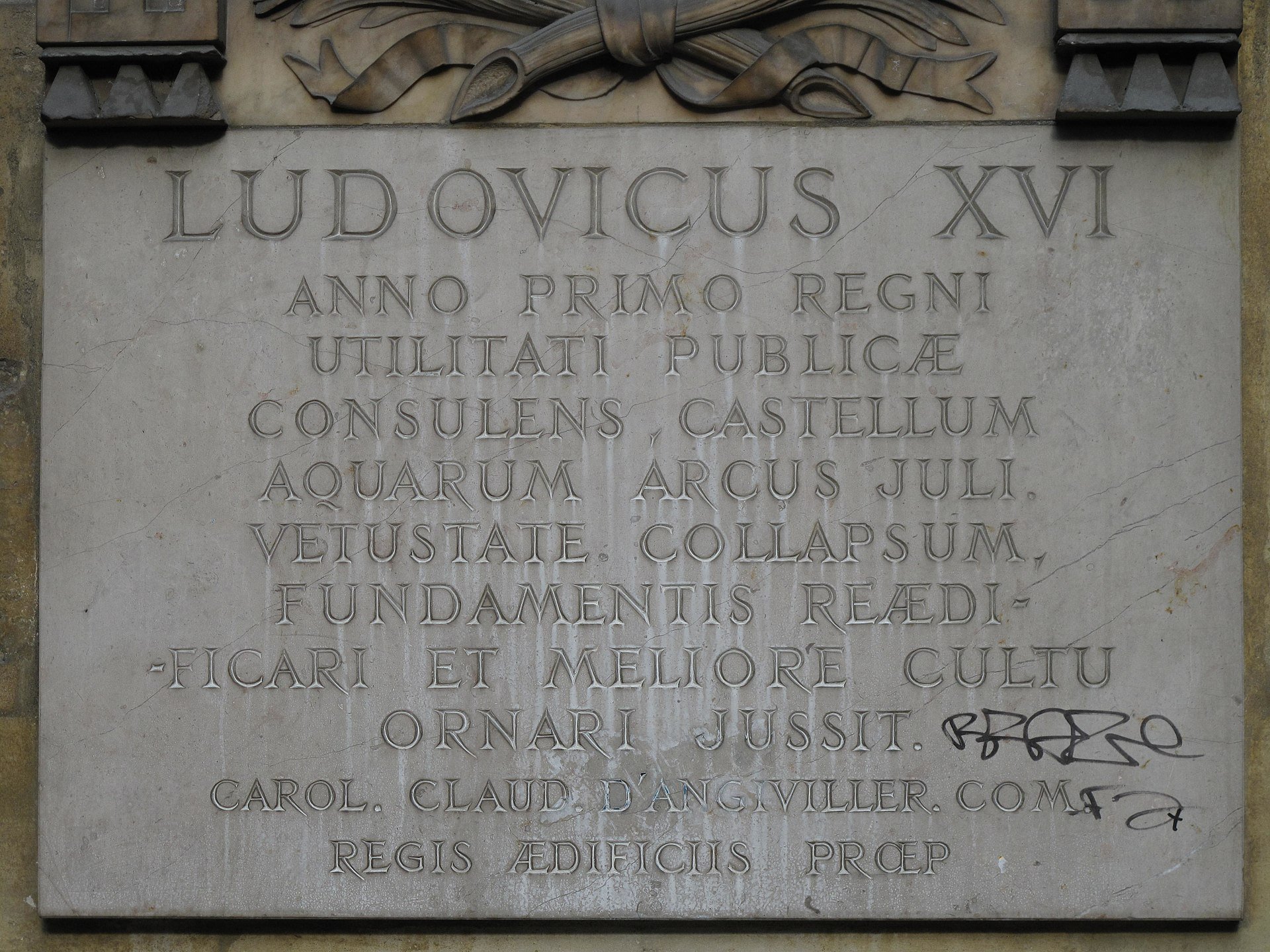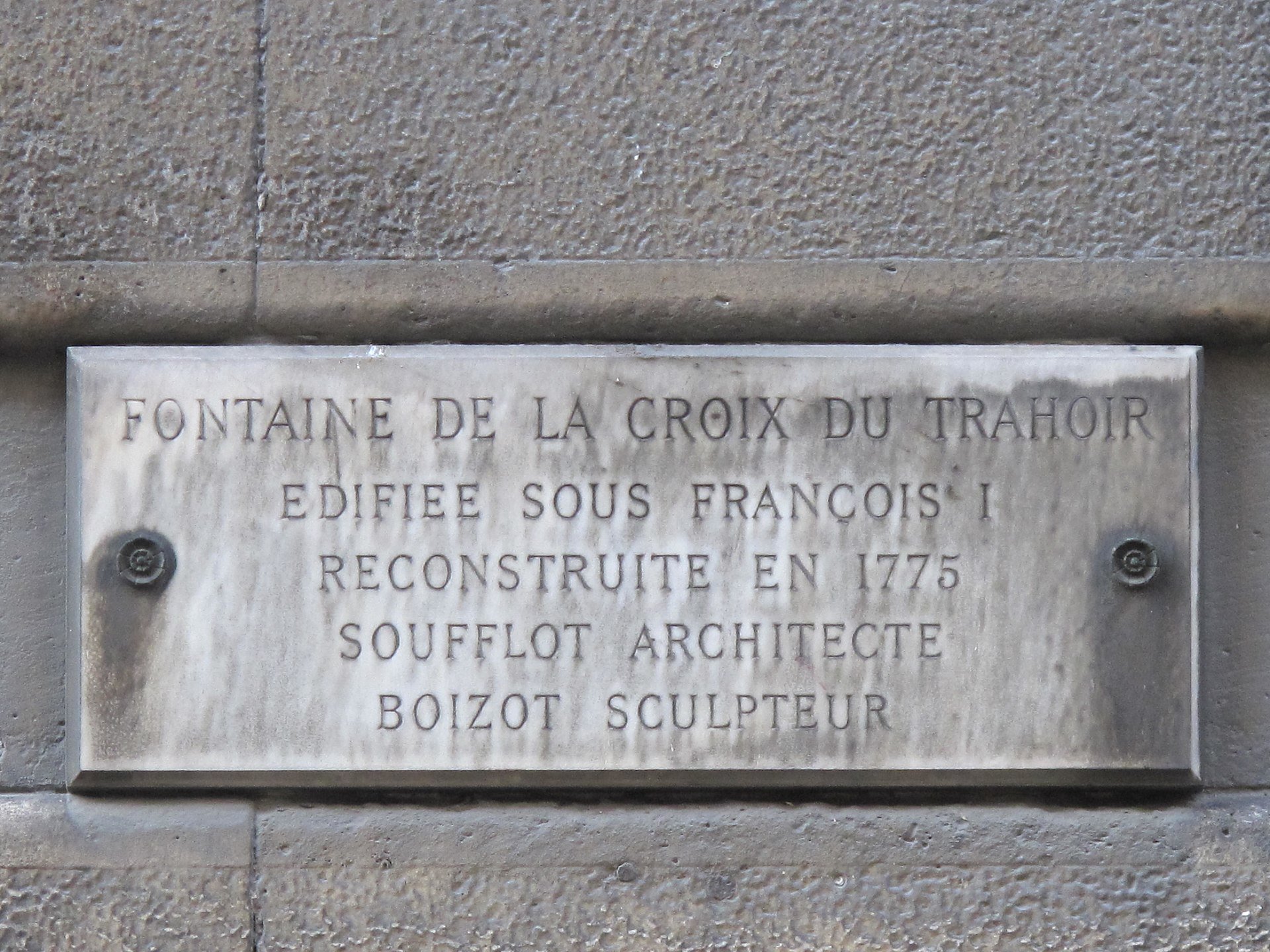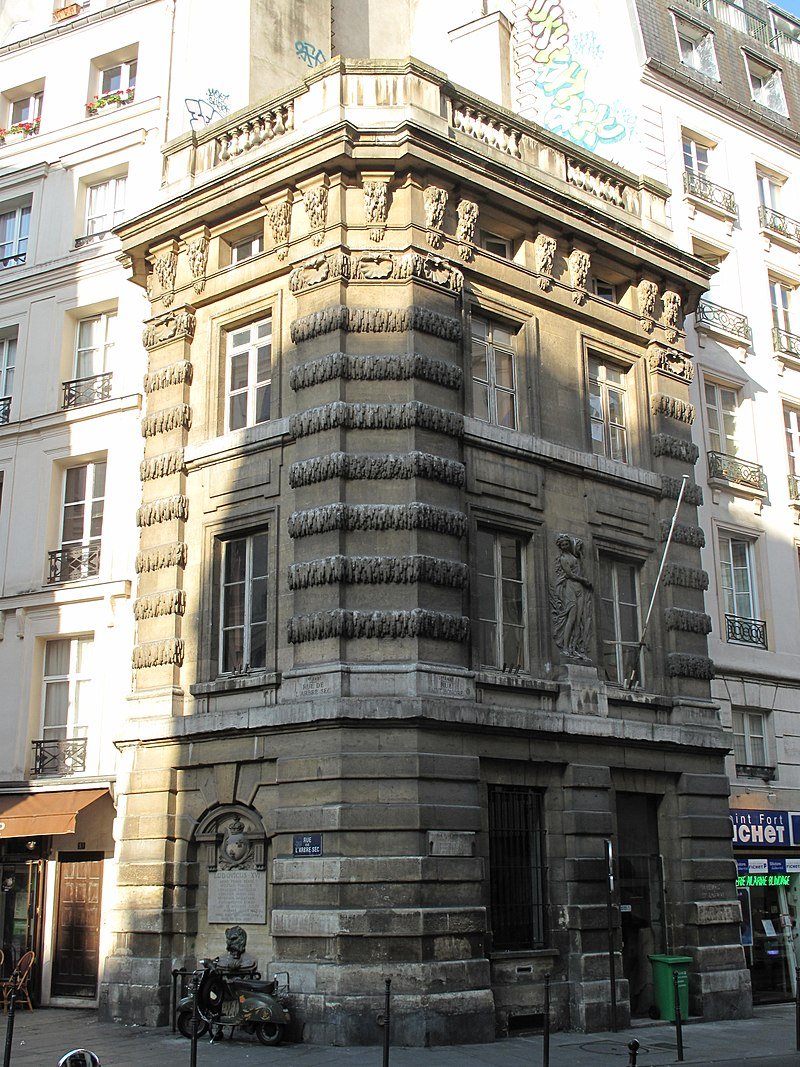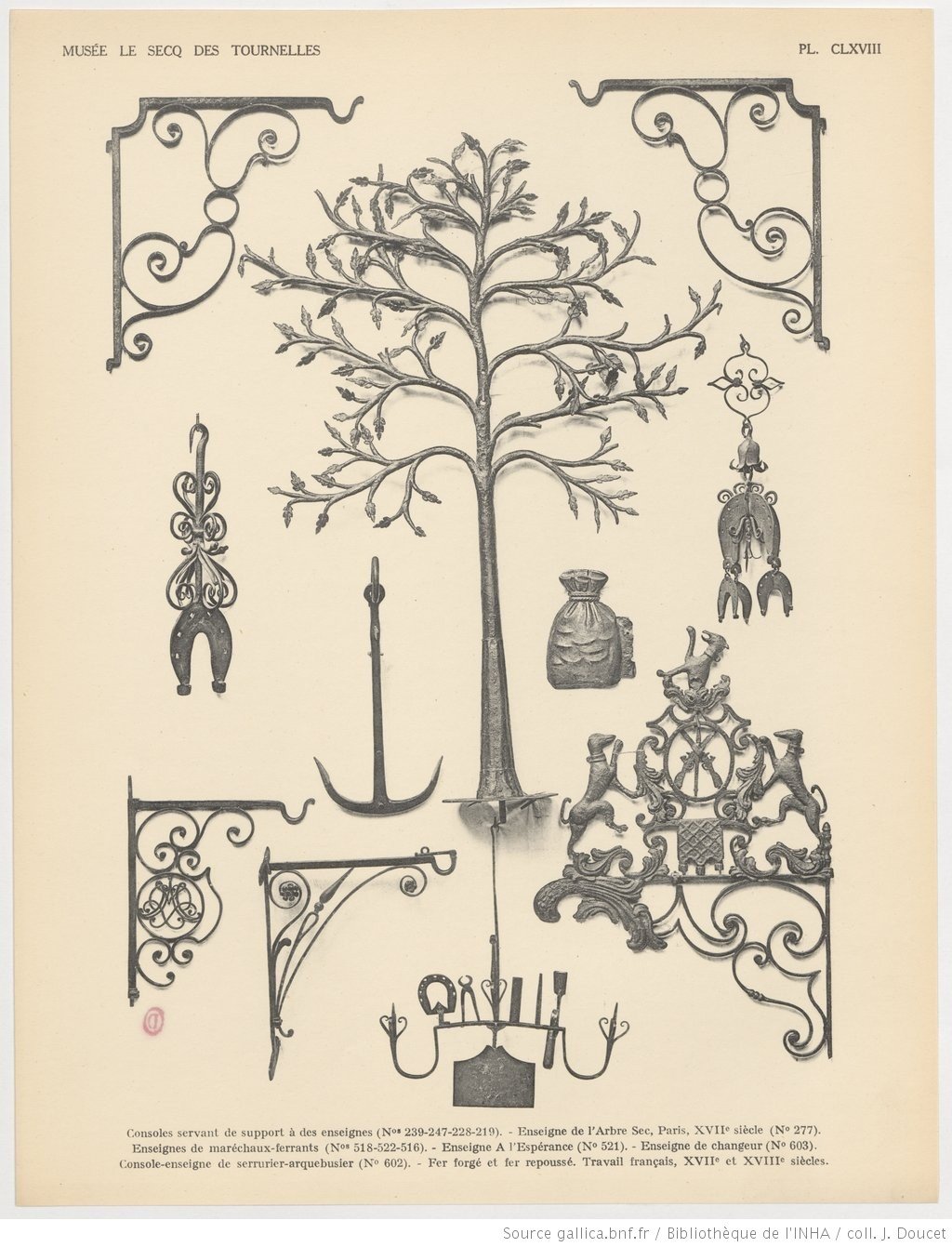45. Places of Execution in Paris
Today we are heading on a rather gruesome jaunt around the capital because while I was doing my research into the gibbet of Montfaucon I stumbled upon a number of other places of execution which I found rather fascinating and I thought you might too. So come with me for a rather morbid walking tour, if you are feeling up to it…..
-
Books
La vie secrète des Halles de Paris, Philippe Mellot.
Les fontaines de Paris François Masson, Mard Gaillard
Notre Dame de Paris, Victor Hugo. (book 6 IV)
Victor Hugo - NOTRE-DAME DE PARIS 1482
Victor Hugo (book 6 IV)
The Project Gutenberg eBook of Notre-Dame de Paris, by Victor Hugo
Madame sevigne letter
Lettre 784, 1680 (Sévigné) - Wikisource
Discipline and Punish, Michel Foucult
excerpt, Michel Foucault, Discipline and Punish
Places of execution
Où se trouvaient les potences, piloris et gibets à Paris
https://fr.wikisource.org/wiki/Lettre_784,_1680_(S%C3%A9vign%C3%A9)
Les lieux d’exécution de Paris – Paris ZigZag | Insolite & Secret
Butte Saint Roch
La butte Saint Roch au Moyen Age : le marché aux pourceaux - Histoires de Paris
Place de Greve
La place de Grève, 500 ans d’exécutions
Place de l'Hôtel-de-Ville - Esplanade de la Libération — Wikipédia
When Paris' Hotel de Ville Was a Gruesome Execution Site
fountain
https://www.pariszigzag.fr/insolite/la-croix-du-trahoir-un-lieu-de-supplice-en-plein-paris
https://fr.wikipedia.org/wiki/Fontaine_de_la_Croix_du_Trahoir
Petite histoire de la fontaine de la Croix-du-Trahoir – Association Marais-Louvre
La fontaine de la Croix du Trahoir
The Fountain of the Croix-du-Trahoir in Paris - French Moments
https://www.paristoric.com/index.php/sciences-et-nature/fontaines-et-bassins/158-la-fontaine-de-la-croix-du-trahoir
La fontaine de la Croix du Trahoir
Pillory
https://marie-antoinette.forumactif.org/t4774-le-pilori-des-halles-de-paris-et-la-peine-du-pilori
Podcast
https://podcasts.apple.com/fr/podcast/executions-in-medieval-london/id1564113746?i=1000585928776
Execution of Damiens
28 mars 1757 : exécution de Damiens pour tentative d'assassinat sur Louis XV
Boot (torture) - Wikipedia
Estrapade
Place de l’Estrapade - Les visages de l’abolition de la peine de mort
-
If you are still with me then let's get started. The most obvious, dare I say iconic, instrument of doom is of course the guillotine but I have already covered her in a previous episode but just to refresh your memory the main places where, during the revolution, you would have been able to witness dr Guillotine’s invention at work were, what is today known as, the Place de la Concorde, place de la Nation, place de la Bastille as well as a few others. Today you can still see the stone slabs of where the guillotine once stood when she was used after the revolution on the corner of the rue de la Croix-Faubin and the rue de la Roquette in the 11th.
But the Guillotine comes at the end of the story of execution in France, it was in fact, used until the death penalty was completely abolished and was, if you remember, a solution to make executions fair and painless. Before you class and crime dictated the kind of gruesome death that awaited you. The common people were hanged, the nobles had the privilege of being beheaded, heretics were burned, regicide quartered and the counterfeiters were boiled! This is by no means an exhaustive list of atrocious ways you could meet your end.
The Revolution of 1789 wished to abolish privileges, so it was decided that there would be one execution for all - the guillotine, how very fair. It was installed for the first time on 25 April 1792 in the Place de Grève, today the Hotel de Ville. The first person to receive this ‘painless’ execution was Nicolas Jacques Pelletier much to the disappointment of the gathered crowd though honestly after what is about to come it does not sound too bad. It was a far cry from the blood, screams and long-suffering of the old executions… so let's get into some of that blood and suffering that the Parisians were so used to, and possibly, so fond of.
Hôtel de Ville
Since we are here at the hotel de ville let’s stay. Today it is still home to the town hall and the place in front is often filled with fun spectacle which are usually painless music events, Christmas markets there is an ice rink set up in winter stuff like that. But since at least the 13th century, the Place then known as the place de greve bore witness to a very different type of spectacle, the slow and often agonising death of the condemned. Apparently, the first such execution took place in 1310, though I am inclined to believe that there must have been earlier examples. I have just not found them… yet but I will continue to look, and if you know of any do let me know. Anyway, the first documented execution I found was when a heretic, Marguerite Porette, was burnt alive on the square. It was common to burn "witches" and quite a number of women lost their lives here, perhaps most famously Catherine Deshayes in 1680 She was known as ‘La Voisin,’ and was wrapped up in the infamous affair of the poisoners which ended up becoming very murky as a number of important big wigs in the courts of Louis XIV were involved too, but that is a whole other story. Mme de Sévigné
in one of her many epistles describes the scene of the execution telling that la voisin, struggled like a madwoman and swore like a cart driver when she was on the stake ! she ends her note ironically “I still know a thousand pleasant little tales like that one; but how can I tell them all?” which might give us some insight into how Parisians looked upon death rather as an amusing show than a deterrent it seems. Suspected witches were burned at the stake on the place as late as the 17th century. But there were other executions carried out here, most common hangings and there was even a pillory more on that later.
By far the most horrific and famous executions were for those people who had committed Regicide - the killing of a king. So that would include an unlucky string of Henrys: Henry the II, his son Henry III and Henry the IV, first of the Bourbons - they were all assassinated. For Henry the II it was as a result of a jousting accident so not really an assassination and though the king graciously pardoned the knight responsible he was nonetheless killed at the place de greve by being quartered. The other unlucky Henris were both stabbed to death by religious fanatics. Much later Louis XV had an attempt made on his life.
Death for regicide was quite the show. By far the most famous was that In 1757, of Robert-François Damiens, he was the one who attempted to assassinate King Louis XV, succeeding in only managing to wound him but slightly but nonetheless his fate was the same as those that had gone before him: torture and execution. Always gruesome his seems to have gone especially badly. I'll give you an idea so do skip ahead if you can't face it. We tend to say in English ‘hanged drawn and quartered’ though the real order is more ‘drawn - which means being pulled around on a sort of crate through the streets by a horse, then hanged for a bit but not enough to kill you, then more horrible things happen to you like getting disembowelled or emasculated and then you are quartered meaning your limbs are pulled apart usually by being tied to horses. There is actually a fascinating episode about this in the podcast on ‘gone mediaeval’ so give it a listen. For the French, they seem to skip the drawing but at least for Damines, but they came up with plenty of awful things to make him suffer. First, he was put in boots, which is a terrible contraption that breaks your legs and feet - the idea is they wanted to see if he had collaborated with anyone and would torture him to find the truth. Then, he was brought to the place de greve and attached to a scaffold. His hand, the one that had held the knife with which he had attempted to kill the king, was burned with sulpher and his skin was torn with pincers then hot oil poured into the wounds, he was emasculated and finally attached to 4 horses for the final, painful part. This, by all accounts did not go easily and it took some time and in the end some help from Sanson the execution before he was finally divided. According to some historians, he remained conscious after three of his four limbs had been torn from his body and his hair turned white. In total it took an hour and a half. Finally, his body was burned so nothing would be left of him. The crowd watched on, apparently enthralled by his suffering. It did have quite an impact though. It was so awful and gruesome and hardly a lesson to others but much more a show that it help further the sentiment that this type of gory show was not the way to go and that a more ‘fair’ and less bloody punishment should be found. Which I suppose they did.
Ironically then this truly awful punishment was carried out because Damiens had tried to take the life of the king. The crowd asked for blood, spectacle and vengeance and they got it. But just a few years later that same crowd would watch in delight as the king himself was murdered, thankfully, and maybe in part to all that Damines suffered, in a far less sordid manner. Interestingly it was carried out by the same executioner. Louis was not the last king to be assassinated. His son, Louis the XVII died of neglect while in prison following the revolution. No one was executed for his death, though his ‘carer’ was indeed guillotined.
The final execution to take place on the Place de Grève by guillotine was in 1830. Thankfully there is no longer any sign of this awful and bloody past the place de greve is now the place de Hôtel de Ville and the only spectacle of agony we can witness are parents forced to take their children ice skating and falling over.
So let us leave the Hôtel de Ville and head up to the 5th arrt. and to the charming place de l’Estrapade, and if that name sounds familiar that is because it is now home to Emily as in Emily in Paris the show on Netflix which is both terrible in that it is far from what life in Paris is truly like but also fabulous, mainly for the shoes and outrageous outfits worn by our eponymous heroine. However, had Emily been teetering home sometime before 1776 she would have seen something other than her dishy neighbour. The place gets its name after the terrible machine that once stood here: the ‘estrapade’ or I think it is called ‘strappado’ in English as it is Italian in origin - which, unlike the guillotine, seemed to be designed for maximum pain. Essentially it was a high structure, a bit like a gallows where the executioner would tie the condemned person's hand behind their back before hoisting them to the top of and then letting them fall abruptly but without touching the ground. This brutal fall caused the shoulders to dislocate and was intensely painful and could be repeated numerous times. Weights could be added to make it more painful. Death would come from shock, heart attack or dislocation of limbs. Sometimes people were released alive but they must have suffered greatly. It was usually reserved for thieves, deserting soldiers or protestants during the wars of religion. Thankfully Louis XVI abolished this barbaric punishment and so today, aside from the name, nothing remains. The only risk of dislocation one has is of your ankles if you choose to wear heels on the charming cobbles.. Watch out Emily.
Where to next I hear you cry. To the 1st arrondissement to an area once known as the butte saint Roche but is now more or less by the Metro Pyramid not far from the Opera. In the 15th century, this was outside Paris proper and you would have found a pig market, pigs having been driven out of the city some years earlier - The reason that the pigs were outside of Paris was due to the unfortunate regicide caused by one of their number. Hear more about it in my episode the pig that killed a king. But it was not just homicidal porcine that we could find it was also a spot of execution, mainly for counterfeiters and it was quite a horrible end. A cauldron would be filled with water, although I have read that oil was sometimes used. The liquid was then heated and the poor condemned person was immersed. Counterfeiting was taken seriously as it was messing not only with the money but the image of the sovereign. Apparently, however, people complained it was too far out and so from 1587 they moved to the much more convenient Les Halles. So let's head there next.
Here we are at les Halles, not far from the spot where Henri the IV was assassinated while stuck in traffic by François Ravaillac on rue de la Ferronnier. But we are heading to the corner of Rue Pierre Lescot and Rue Rambuteau. Here was the site of the pillory of Les Halles. Installed in the 14th century by our friend and cursed by Jeanne de Clisson Philip the VI. It was only taken down in 1789. Because, although execution was often the order of the day, sometimes it was first humiliation then execution and for a lucky few, just humiliation.
So what is a pillory? A pillory is a bit like stocks, but bigger and the one here at les halles was a rather grand affair. Imagine a sort of octagonal tower about 2 and a half stories high. The first floor for Americans and the ground floor for the rest of us was used as either a shop or I have even read could be lived in which does not feel great but ok. But then above it was the pillory which was a sort of turret with 8 big windows opening onto a viewing platform. In the middle was a big wooden wheel with holes for the arms and head. The person suffering this humiliation would kneel I think with their head and arms trapped and basically be put on display to the crowd below. To make it extra humiliating, people's crimes were sometimes written on a sign for all to see and if you were unlucky they would choose a busy market day to display you. Remember les halles is where the huge market of Paris used to be so I think it was always pretty busy. The unfortunate person would be there from about 9am to 3 pm and someone would come regularly to turn the wheel so everyone got a good look from all sides. Passersby were allowed to laugh and throw all manner of filth which I am sure was readily available this being Paris which was famously filthy but again it's a market place so lots of rotten food at hand. However, they were told not to throw rocks or sharp objects so as not to kill the person. This might be because they were going to be executed later or they were going to be let go after being humiliated. It was most often used for embezzlers, insubordinate soldiers, beggars, pimps, and blasphemers. Although this on its own sound awful it was sadly often only the appetiser of a much worse punishment such as cutting off a limb or an ear. If you did not learn your lesson and were sent to the pillory a second time you would have your upper lip cut, a third your lower lip would be cut, a fourth the lower lip is cut off I have read and a 5th time and your tongue would be cut out, though in 1666 Louis XIV, ever the softie, made it 8 times before the tongue cutting.
And if you would like an idea then lets turn, once again to our friend victor Hugo who describes the pillory at place de grève in comparison to this one at les halles. Victor Hugo we know did not approve of the death penalty he also hated Napoleon III’s renovations of Paris and liked to describe Paris as it was so we get lots of great descriptions in his books.
This populace, disciplined to waiting for public executions, did not manifest very much impatience. It amused itself with watching the pillory, a very simple sort of monument, composed of a cube of masonry about six feet high and hollow in the interior. A very steep staircase, of unhewn stone, which was called by distinction “the ladder,” led to the upper platform, upon which was visible a horizontal wheel of solid oak. The victim was bound upon this wheel, on his knees, with his hands behind his back. A wooden shaft, which set in motion a capstan concealed in the interior of the little edifice, imparted a rotatory motion to the wheel, which always maintained its horizontal position, and in this manner presented the face of the condemned man to all quarters of the square in succession. This was what was called “turning” a criminal.
As the reader perceives, the pillory of the Grève was far from presenting all the recreations of the pillory of the Halles. Nothing architectural, nothing monumental. No roof to the iron cross, no octagonal lantern, no frail, slender columns spreading out on the edge of the roof into capitals of acanthus leaves and flowers, no waterspouts of chimeras and monsters, on carved woodwork, no fine sculpture, deeply sunk in the stone.
He goes on to describe the distressing events when Quasimodo is displayed to the crowd but we shall leave him there.
Let’s finish our cheery little walk by heading back over to the 1st, specifically to the intersection of the rue Saint-Honoré and rue de l’Arbre-Sec here you will find a little fountain known as the Croix-du-Trahoir or ‘cross of the drawer’ This current fountain dates back only to 1775 and was renovated by Sufflot - the architect that built the panthéon (fancy) but an earlier one was apparently designed by Jean Goujon in 1529 (he also designed lots of the sculpture outside the louvre so pretty important guy) but there has apparently been a fountain here since mediaeval times. and as you can see was quite an important spot so let’s just situate ourselves for a moment. We are a skip away from the Louvre and this crossroads used to be located at the intersection of the main north-south and east-west routes into Paris. And for several centuries, it was one of the busiest crossroads, there was a lot of commerce here but it was also one of the places where public executions took place, at least until 1698.
Here, as well as I am sure of the usual punishments, you might witness counterfeiters being boiled, the mint is just over the river, and a particularly odd punishment known as l’essorillement which was the cutting off of an ear or two often of servants who had been up to no good.
So what is so special about this fountain? Well, aside from being designed and maintained by illustrious men it is the name. The fountain itself is quite discreet; it sort of sits in a little niche with fleur de lys above it and a sign in Latin that basically says Louis the XVI renovated it. Fountains are important in Paris for lots of reasons but we are not getting into that here. Just briefly the building to which it is attached which was part of Soufflots scheme it is meant to look like water is cascading down the side and it was used by the fountain workers for some time. As to the fountain itself, the water spouts out of the mouth of an angry-looking moustachioed man giving a king of lion/sea creature energy and it falls into a shell-shaped receptacle below, I will put up some pictures of course.
Its name however refers to two different activities that once were here. The word ‘trahoir’ is an old version of tiroir which means drawer and these draws were used to stock and display fabric which was once sold in the surrounding shops. Coix means cross and this is because as well as a fountain there used to be a cross next to the fountain for the condemned to make their final prayer before being executed. The cross was destroyed in the revolution. Strangely I have also seen that the cross stood on a stone foundation and that butchers and grocers would use it to display their wares as well, so it must have been quite a bustling place.
One last anecdote - the name of the road, ‘arbre sec’ or dry tree is sometimes sighted as being named after the dry tree in other words the gallows or pillory you would have found here, though others dispute this saying it came from a draper who lived there, and he had a sign representing a tree without leaves for his shop. Yet others say the dry tree in question is the mythical tree in the stories of Marco Polo while elsewhere it is described as the ‘arbre sel’ the salt tree and might have had something to do with a tree covered in snow.. Mysteries abound. Regardless, though there is no cross, no pillory and no one getting their ears chopped off this overlooked little fountain has seen a thing or two.
End.


